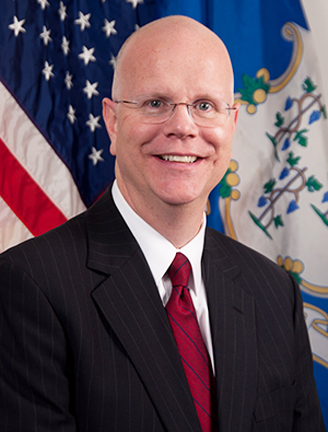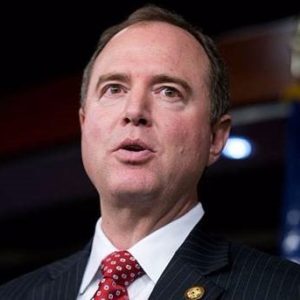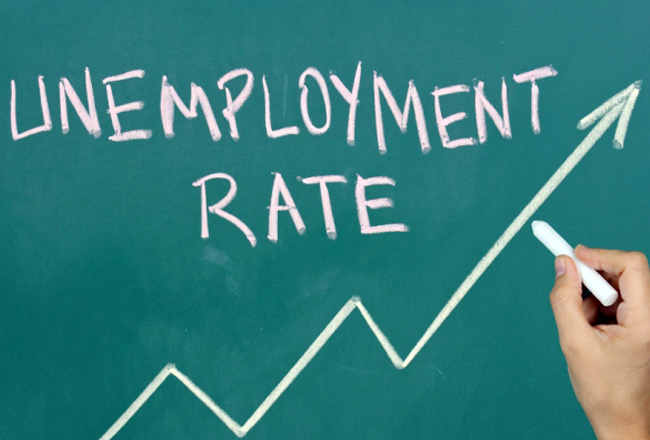https://www.youtube.com/watch?v=d914EnpU4Fo&feature=youtu.be
At his daily briefing today, Connecticut Gov. Ned Lamont announced another 429 confirmed COVID-19 cases and 16 deaths, including a baby who was less than six weeks old.
Those numbers bring Connecticut”™s to-date total to 3,557 confirmed cases and 85 deaths. The latest county-by-county breakdown can be found here.
 Today”™s briefing took place at Southern Connecticut State University in New Haven, where the Connecticut National Guard built a 250-bed mobile hospital provided by FEMA, which Lamont said had been put up in less than five hours.
Today”™s briefing took place at Southern Connecticut State University in New Haven, where the Connecticut National Guard built a 250-bed mobile hospital provided by FEMA, which Lamont said had been put up in less than five hours.
“Southern Connecticut is getting closer to capacity” in terms of hospital and ICU beds, the governor said. Dr. Steven Choi, chief quality officer at the Yale New Haven Health System, said there are now over 3,000 coronavirus patients in residence, and that the state anticipates that number to “drastically increase” over the next few weeks.
Josh Geballe, the state”™s COO, said the state”™s rates of hospitalizations and mortalities are “pretty consistent” with what has been seen around the country and the rest of the world. The state continues to act on the assumption that it does not have enough beds to deal with the anticipated need, and that there is no fixed number of beds that will be needed, as “the dynamics are very fluid.”
Connecticut expects to announce another testing facility soon, the governor said, which will be able to conduct around 1,000 tests a day.
Repeating his belief that social distancing is working as a means of keeping down infections, Lamont noted that his latest executive order mandates that grocery stores maintain a 50% capacity, and that no more than one member per family should be shopping in a particular store at a given time. He further encouraged everyone to use credit cards rather than cash, and delivery services, especially in the case of elderly shoppers.
Lamont said that his talks with his peers at the state level have found that “All the governors are desperate” for PPE (personal protective equipment). He added that the federal government has repeatedly promised Connecticut such equipment immediately, only to then announce that it would be arriving the following week.
“I have it on very good authority that we’ll have it next week,” he added dryly. “Don’t believe what you hear on TV,” he added in reference to White House briefings that have insisted such help is on its way.
Of the much-ballyhooed $2 trillion CARES Act, Lamont referred to it as a “care package” and said that as he understood it, the promised funds would not start rolling out until April 24 at the earliest, “which means thousands of bankruptcies between now and then.”
He also said that insurance companies in the state are now offering a 60-day grace period for paying for health and property/casualty insurance, making Connecticut the first state to announce such a policy.
EFFECTS ON STATE ECONOMY
In his first monthly budget and economic outlook report since the COVID-19 pandemic emerged in Connecticut, Comptroller Kevin Lembo today said the state is currently on track to end fiscal year 2020 with a general fund deficit of $170 million, though he warned that the rapid changes taking place now could quickly render that figure outdated.

“The speed and scale of the pandemic”™s economic disruptions are unprecedented for Connecticut,” Lembo said. “As a result, the full extent of the impact is not yet clear and may take weeks, if not months, to determine. The current year deficit could, and likely will, grow larger.”
The comptroller”™s deficit projection, $111.4 million higher than the state Office of Policy and Management”™s last report, reflects an updated analysis and estimate on the withholding portion of the income tax ”“ Lembo projects a $130 million reduction in withholding revenue so far ”“ as well as a reduction in sales tax revenue by $30 million.
“My office is already seeing a drop-off in withholding receipts from the large number of layoffs and furloughs resulting from nonessential business closures related to the state”™s response to the COVID-19 pandemic,” Lembo said. “In addition, we are reducing the sales tax estimate by $30 million, again due to coronavirus-related business closures and shelter-at-home directives.”
Lembo said that the state”™s efforts to rebuild its budget reserve fund in recent years have proven essential at this time. The state”™s statutory revenue volatility cap, which requires revenue above a certain threshold to be transferred to the fund ”“ often referred to as the “rainy day fund” ”“ is $3.3 billion for estimated and final income tax payments and revenue from the pass-through entity tax for fiscal year 2020.
Lembo”™s updated budget reserve fund outlook includes:
- A $318.3-million volatility transfer would be made to it at the close of the fiscal year;
- The balance of the fund currently stands at $2.5 billion;
- Adding the estimated $318.3-million volatility transfer, less the projected FY 2020 deficit of $170 million, would bring the year-end fund balance to approximately $2.65 billion;
- That balance, if achieved, would represent approximately 13.3% of net general fund appropriations for FY 2021. (Lembo has long recommended the state maintain a budget reserve fund at 15%.
Today, the comptroller said, “as the state faces an unexpected public health and economic crisis, Connecticut is better positioned to meet the challenge.”
In addition, both the state and the nation saw a historic spike in initial unemployment insurance claims in recent weeks as coronavirus concerns forced numerous businesses to close. According to the U.S. Bureau of Labor Statistics, initial unemployment claims for Connecticut increased 630% (from 3,440 to 25,098) for the week ending March 21. Jobless claims continued to surge as more claims poured into the Connecticut Department of Labor on a daily basis.
SBA MOBILIZATION
The U.S. Small Business Administration has begun mobilization of banks and other lenders to distribute $349 billion to businesses with 500 or fewer employees, in a program largely designed to help them avoid layoffs and rehire staff amid the economic crisis caused by the virus.
U.S. Treasury Secretary Steven Mnuchin said he expects the SBA to have the program up and running by Friday. Businesses should be able to apply for a loan and be approved on the same day at any SBA 7(a) lender, bank or credit union.
The Paycheck Protection Program was part of the $2 trillion stimulus package passed by Congress and signed into law by President Donald Trump last week.
“Speed is the operative word,” SBA Administrator Jovita Carranza said. “Applications for the emergency capital can begin as early as this week, with lenders using their own systems and processes to make these loans.”
The program is offering loans of up to $10 million to cover payroll costs, rent, utilities, and mortgage interest. Businesses may make the loans retroactive to Feb. 15 and can rehire their recently laid-off employees through June 30 to receive the money to cover the cost.
Businesses receiving loans can have a portion of their borrowing forgiven, namely the portion of operating expenses in the eight weeks following the date of loan origination. Because the SBA expects high demand for the loans, only 25% of the forgiven part of the loan will cover non-payroll costs.
All loans will have identical features: an interest rate of 0.5%, maturity of two years, first payment deferred for six months, 100% guarantee by SBA, no collateral, no personal guarantees, and no borrower or lender fees payable to SBA.
Those eligible to apply include for-profit businesses, nonprofits, veterans”™ organizations, tribal concerns, sole proprietorships, self-employed individuals and independent contractors.
HELP EXTENDED TO NONPROFITS
Also designed to help the state”™s nonprofits is The Connecticut COVID-19 Charity Connection (4-CT) an independent, 501(c)3 organization announced today by Lamont.
4-CT will provide financial support to ensure that nonprofits serving those impacted by the pandemic can meet increased demand. Lamont today said the charity has already raised over $10 million from donors and is seeking to significantly increase those efforts over the coming months.
The founders of 4-CT are Don Kendall, co-founder and chair of Social Venture Partners Connecticut, who is serving as the organization”™s CEO; and Ted Yang, CTO and founder of MediaCrossing Inc., who is serving as COO. Partners include the Hartford Foundation, The Community Foundation for Greater New Haven and Fairfield County”™s Community Foundation.
“I applaud the 4-CT vision for creating this opportunity to quickly get these critical resources to communities throughout Connecticut,” said the latter”™s president and CEO, Juanita James. “As a Community Foundation, we are thrilled to partner in coordinating efforts to quickly address the most pressing needs and to greatly magnify the impact of our local efforts.”
Those interested in making a contribution to 4-CT should visit www.4-ct.org.
GRIM D.C. PREDICTIONS; POSSIBLE INVESTIGATION OF TRUMP’S ACTIONS
A model devised by the Institute for Health Metrics and Evaluation (IHME) at the University of Washington projects that Connecticut”™s hospitals will hit peak resource use on April 16, at which time there will be a shortage of 2,167 hospital beds and a deficit of 499 ICU beds.
It further forecasts a peak of 41 single-day deaths on that date, with the numbers tapering off and reaching zero by May 19. Through Aug. 4, the state can expect to record 1,092 deaths, according to the model.
On the national level, the IHME model also predicts an April 16 peak ”“ with 2,607 deaths that day ”“ along with a shortage of 84,671 hospital beds and a shortfall of 18,905 ICU beds. The U.S. will first see zero coronavirus-related deaths on July 16, according to the model. Through Aug. 4, the IHME model projects 93,765 COVID-related deaths in the U.S.
Various health experts at the federal level have predicted that coronavirus-related deaths in the U.S. could total 100,000 to 240,000 by mid-June, even with adherence to the strict mitigation measures that are in place for the next 30 days.
Researchers around the nation have cautioned that all models are by nature imprecise, as information about how the virus is spreading remains inexact.
Trump, who called those estimates “sobering,” said that, “I want every American to be prepared for the tough days ahead. This is going to be a very, very painful two weeks.”

Meanwhile, House Intelligence Committee Chairman Adam Schiff (D-California) told The Washington Post that discussions have begun on a 9/11 Commission-style investigation into Trump”™s response to the pandemic.
That response has gone from “We have it very much under control in this country” on Feb. 23 to “One day ”” it”™s like a miracle ”” it will disappear” on Feb. 27 to “I would love to have the country opened up and just raring to go by Easter” on March 24 to the aforementioned prediction of “a very, very painful two weeks” yesterday.
“We will need to delay the work of the commission until the crisis has abated to ensure that it does not interfere with the agencies that are leading the response,” Schiff told the paper. “But that should not prevent us from beginning to identify where we got it wrong and how we can be prepared for the next pandemic.”
Speaking today to CNN, Vice President Mike Pence defended Trump’s previous comments as proof that he “is an optimistic person …. I don’t believe the president has ever belittled the threat of the coronavirus.”
As of this writing, there were nearly 200,000 confirmed COVID-19 cases and over 4,300 deaths in the U.S., with more than 911,000 confirmed cases and over 45,500 deaths globally.






















